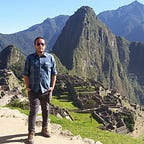Some Issues Between Communities and World Heritage Sites in Africa
Africa as continent faces a great amount of socio-economic and political problems that constantly affect all areas of society and its development. Unfortunately, these problems extend to World Heritage Sites and their context as well. In Ethiopia particularly, a series of political, social and military issues affected the area during the second half of XIX century. Moreover, lack of development and economical resources had a considerable impact on protected areas, conservation policies and management plans (Jacobs and Schloeder, 2001). As an example, the Simien National Park is one of the cases that represent the repercussions that this type of issues have on World Heritage Sites.
Simien National Park (Figure 1) is located in the northern part of Ethiopia, in the Gondar Region. It was inscribed as a World Heritage Site by UNESCO in 1978, and it has been placed in the UNESCO’s In Danger List from 1996 to the present (UNESCO, 2017). The park was one of the first African sites to be inscribed in the World Heritage List, Simien National Park along with the Island of Gorée (Senegal) and the Rock-hewn Churches at Lalibela (Ethiopia) among other sites, are clear examples of the key issues that characterize the region (Makuvaza, 2014).
This area has been historically inhabited by Ethiopian Jewish people for more than two thousand years; most of them were immigrants, settlers and cultivators who appropriated the landscape. Nowadays people that live in Simien Mountains are mainly Orthodox Christians and some Muslim communities. The Simien area economy is predominantly agriculture and livestock. However, increasing population over time has exceeded the availability of resources and productivity of land; causing a series of social issues and economic difficulties for these communities (Simien Mountains National Park, 2017).
The park has been constantly affected by the socio-political context in which it is immersed. Ethiopia faced several social, economical and political issues in the region that affected directly on the people and communities that interact with the park, as well as their economical stability. Inevitably, these problems also had a negative impact on the stability of conservation and protection policies, which of course, brought along detrimental situations into the park.
It is argued that the main reason of why that park was placed in the In Danger List by UNESCO, is because “of a major increase the human population in the Park and consequent problems with management” (Makuvaza, 2014, pp. 1–2). Taking into consideration the socio-economical context of the country, the conservation of the natural assets of the park and protecting their integrity, was not the first or main priority for neither the communities nor the government.
An interview conducted in 2003, with Leykun Abune, the Program Coordinator of Simen Mountains Integrated Development Program, exposes some of the main threats that the park is facing:
Recent decades have seen severe environmental threats from unregulated use of living space associated with alarming population growth. The imbalance of increased population, land shortage, and economic need is threatening the unique environment, leading to severe degradation of natural resources in the Park. The threats include intensive farming, overgrazing, deforestation, and intrusion into special habitats leading to excessive soil erosion, habitat degradation, and loss of genetic resources. (Hurni and Abune, 2003, p. 238).
This clearly highlights some of the main problems that can occur when there is an uncontrolled and excessive interaction between communities and World Heritage Sites. Moreover, such issues are aggravated when the communities face severe socio-economical and political difficulties that affect their stability.
As these facts point out, communities and their everyday activities, as well as the social, economical, military and political issues surrounding these communities have greatly impacted Simien National Park in a negative way. So much so that the park has remained on the list of endangered sites for more than two decades. Cases like the Simien National Park must be taken as an example of problematic interaction between communities and World Heritage Sites, not only in Africa but in the rest of the world. At the same time, it should warn authorities and communities in other parts of the world about these types of issues, and encourage them to develop appropriate strategies to avoid such issues regarding their own World Heritage Sites.
References
Hurni, H., & Abune, L., 2003. The Simen Mountains National Park World Heritage Site: An Interview with Leykun Abune, Program Coordinator, Simen Mountains Integrated Development Program. Mountain Research and Development, 23(3), 238–239.
Jacobs, M. J., & Schloeder, C. A., 2001. Impacts of conflict on biodiversity and protected areas in Ethiopia. Washington, DC: Biodiversity Support Program.
Makuvaza, S., 2014. The Management of Cultural World Heritage Sites and Development in Africa: History, Nomination Processes and Representation on the World Heritage List. Springer Science & Business Media.
Simien National Park. UNESCO Centre. Retrieved: March 04, 2017, from http://whc.unesco.org/en/list/9
The People of SMNP. Simien Mountain National Park. Retrieved: March 30, 2017, from http://www.simienmountains.org/the-park/the-people-of-smnp
